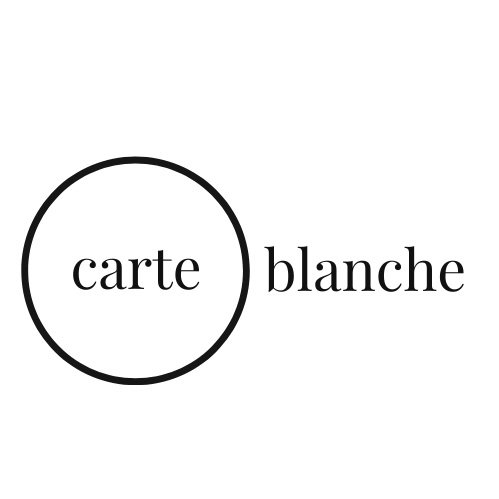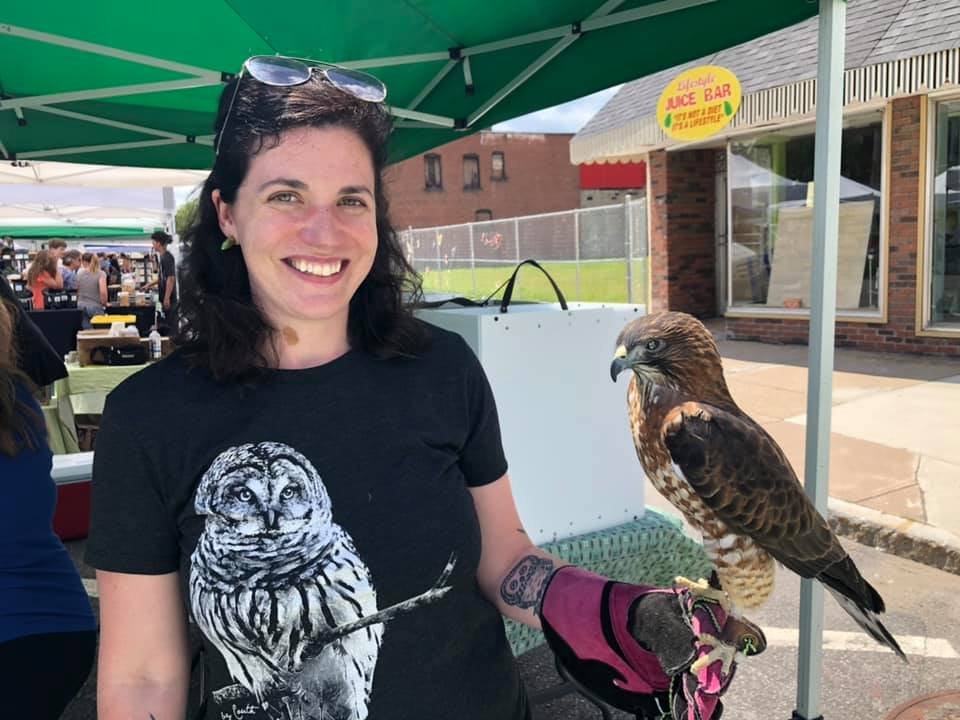Parlour Games
by Sarah Giragosian
Before the infamous “shower scene” in Alfred Hitchcock’s horror film Psycho, there’s target practice in the parlour, a sequence that at once grips and baffles me. Why does Marion Crane stay? There are too many red flags: Norman’s rictus of a smile, the sad stitching of the taxidermied raptors, his—cough, cough—hobby of “stuffing things.” Beyond the frame, somewhere in the backwoods, there’s sawdust mixed with dismembered viscera. Dredge the swamp, and you’re likely to find a small tribe of father figures, his mother’s paramours, now bloated fish food.
“You must remember that bad business out there about ten years ago,” the sheriff says, but no one, not Marion’s useless boyfriend, nor her sister troubles to ask what he means.
Better to drive past the neon hotel sign blinking the family name, but Marion could barely keep her eyes open. Better to wonder about the man who stays to himself but brings dead things home to stuff. Wire, salt, soap, a needle, thread, and cotton bulls for the insides.
Why does she stay? Sure, she’s hungry and tired, and her host has a peephole concealed under a painting that looks into her bedroom, but she does not know that yet, and her politesse wins over her doubts in that weird darkroom where he develops his plans to murder her. Night shadows play on his face. Predatory birds loom over her head. Later, when he runs back to his Gothic home, now known to fans as The Psycho House, has he already started crossing over to become his mother?
“You eat like a bird,” he says to her, gawking as she munches. He has her in his cross-hairs. His broad shoulders are practically wings, but he gets so many things wrong about birds—their passivity, for one. He ought to know more: his hobby requires intimate study and deft handling of them. It takes a sharp knife, a steady hand to carve open a bird. A granular vision. Snip the neck, peel the skin off, scrape the meat. Be careful: the tendons around the spinal cord can tear a hole in the skin. He imagines taking off his mother’s old dress, keeping her skull intact while it flits around her head. He must not catch it on her ribcage. The whole body is liable to fall apart, a shipwreck of bones. He must schlep them up and down the staircase.
Why doesn’t she fly away herself, that Marion Crane? Can you see in your mind the silhouette of a crane arcing over a river? Exquisite birds—leggy with long, graceful necks. A breeze to snap. A species that forages on plant and animal matter and lives on all continents save Antarctica and South America. There’s a bird inside of her; she’s hungry too. She takes what is not hers: $40,000, enough to start over with her beau. Enough to escape her fishbowl world.
Norman Bates has a switch inside of him, wedged in the back of his neck. And what a heavy mask he wears. Can he take it off, even for a few minutes, with her? He’s not sure.
What lies behind their ho-hum civility? She, nibbling on a sandwich; he, maundering about birds? As predator and prey, they are tangled together in their deceptions, a twisting rubato against the sky. The death spiral, it’s called when raptors test the fitness of their mate. Down they plummet from the sky, talon to talon. Sometimes, the ground surges upwards, but they refuse to let go of each other. It can be a fatal dance. Think of it as the ultimate first date.
Why does she stay? And I realise—writing this—that I must turn this question back to myself. Why am I blaming the victim, questioning her behaviour? Having been so close to dangerous men myself, why am I befuddled by Marion’s naivete, especially as I have been accused of the same quality? I have been harassed, stalked by men whose pathologies are based in delusion, but I have never—to my knowledge—been so totally vulnerable to the delusions of a psychopath. But who knows? In graduate school, I saw my stalker not as malevolent, but as pathetic. He kept track of my whereabouts, letting me know that he noticed where I parked my car at night, at what time I returned home after a day of teaching and tutoring until ten o’clock. Was he creepy? Yes. And I found out later that he was a felon who had stalked women other than myself, information that would have rattled me more had I known at the time. Fortunately, he was evicted from the apartment complex for a number of offenses, perhaps just in time: before his behaviour escalated to violence.
I have to wonder: maybe I have a bit of Marion in myself. Maybe my self-protective instincts are glitchy too. How many times have I conceded to a logic of self-contraction at my own expense to dodge the volatility of men like Norman? How many times have I played a part that so many women know only too well? And to what extent has slipping into that shrunken role a reflex? And, moreover, how many women miscalculate what men like Norman are capable of? For Marion, it was a fatal miscalculation.
She stays. Hitchcock ensnared her from the very beginning. The director’s sexism has been well documented both on screen and off, as he has drawn upon a closetful of stereotypes to represent his female characters. As British journalist Bidisha SK Mamata has written, “There’s the vamp, the tramp, the snitch, the witch, the slink, the double-crosser and, best of all, the demon mommy. Don’t worry, they all get punished in the end.” Perhaps Marion was a double-crosser, but she was also something else: a crane, leggy, majestic, sacred in some cultures. To harm the crane is a violation against nature. To what extent is Norman’s mutilation of her body also Hitchcock’s, a notorious womanizer known for his ill-treatment of his actresses? Or was Hitchcock simply following the script? Before it was a film, the story was a novel that Hitchcock adapted for the screen.
And let us not forget that Norman is being hunted too. On the subject of his mother’s institutionalisation, he insists, “She’s harmless. She is as harmless as one of those stuffed birds.” At that precise moment, he glances up; a swooping great horned owl glowers down at him, hungrier than he remembered. Why does he think of his mother? From the low-slung ceiling, ghosts tarry, play ruckus with reality. Sometimes he imagines himself doddering around in a snow globe, frozen in the snowscape of a boneyard. Birds suspended in light, oil, and water, as well as hardier stuff: antifreeze and glycerin, the latter to slow down the fall of faux-snow. One has to wonder: who is the real predator? Who is the prey? How much of Norman’s impersonation of his mother is drawn from life, and how much is fabulation? Is his mother the true predator? The film asks more questions than it resolves.
Psycho is just as bird-obsessed a film as The Birds, Hitchcock’s film produced three years later, that imagines a bird apocalypse ravaging a small California village called Bodega Bay as it follows a young socialite’s pursuit of a potential boyfriend. The pell-mell romance deepens while the freak birds indiscriminately attack, leaving open the question of why they suddenly became determined to terrorise the town¹.
Why does Marion stay? There are red flags, yes, but she’ll leave first thing in the morning. She intends to return the money she has stolen. For her: the low-angle shot, the redemptive speech. Of course, the forty thousand dollars will not be returned. Bundled forever in the day’s newspaper, it will wind up at the bottom of the swamp for the frogs and turtles to read. “Unhappiness can be bought off,” the happy father, her boss, had said.
What mysterious forces set Norman off? The pop psychology at the end of the film tries—but fails—to explain the depths of Norman’s delusions. What was it about Marion that appealed to the outer limits of his subconscious or—in the words of his therapist once he is institutionalised—his “mother-side?” Norman, a name just a letter short of normal. Norman, with his boyish face. A killer should not be born with such a face, but the mask is slipping off again. He makes a compensatory gesture, a shy smile.
Marion is thinking of tomorrow. She’d like to leave early, straightaway when she wakes. She’ll set things right again. All she needs is a chance to explain and some compassion, the forgiveness of her former boss and his client. Can she manage a do-over? She’s practically counting down the hours until dawn when she can return home. Back to Phoenix, Arizona, where she’s aching to rise again.
She steps into the shower, tossing her head back as the water warms her skin and bones. Finally, she is beginning to relax. A smile, then she eases into her routine, cleaning her arms, her neck. A silhouette of an old maid appears behind the shower curtain. When she attacks, knife in hand, it could very well be a raptor beak, slicing through a little songbird.
I want to imagine Marion still hanging around, even after the shower scene, perhaps as a ghost or even as a little bird. Can a songbird be fierce, bold in the way of raptors? There is of course the shrike, a big-headed songbird with black, gray and white plumage known for severing the spinal cords of other songbirds. When the shrike bites, she bites right under the skull. In her afterlife, I want to imagine Marion as more shrike than crane, who has never contracted herself to play at being anyone but herself. Of course, there is a cost: the shrike, also known as the butcherbird, must bear the reputation of her name.
¹ Interestingly, Rachel Carson published Silent Spring a year before the release of The Birds, although her magnum opus describes a different kind of bird apocalypse, one human-engineered by the use of the pesticide DDT. I imagine Hitchcock engrossed in the highly publicised news of Carson’s book, if not the book itself, contriving of a film that would turn birds into the villains. Could Silent Spring have been the foil for The Birds? Film historian William Hare thinks so: “With the massive attention given to Carson’s best-seller,” Hare argues, “along with the attendant international publicity concerning her well-publicised congressional testimony, interviews and lectures, it would be virtually inconceivable for her viewpoint and widely expressed concepts to escape Hitchcock’s consciousness” (276).
ABOUT THE CREATOR
Sarah Giragosian is the author of the poetry collections Queer Fish, a winner of the American Poetry Journal Book Prize (Dream Horse Press, 2017), and The Death Spiral (Black Lawrence Press, 2020). In 2023, the University of Akron Press published the craft anthology Marbles on the Floor: How to Assemble a Book of Poems, which she co-edited. In 2024, Middle Creek Press released Mother Octopus, a co-winner of the Halcyon Prize. Sarah's writing has appeared in such journals as Orion, Ecotone, Tin House, Pleiades, and Prairie Schooner, among others. She teaches at the University at Albany-SUNY.
@sarahgiragosian on Instagram.

